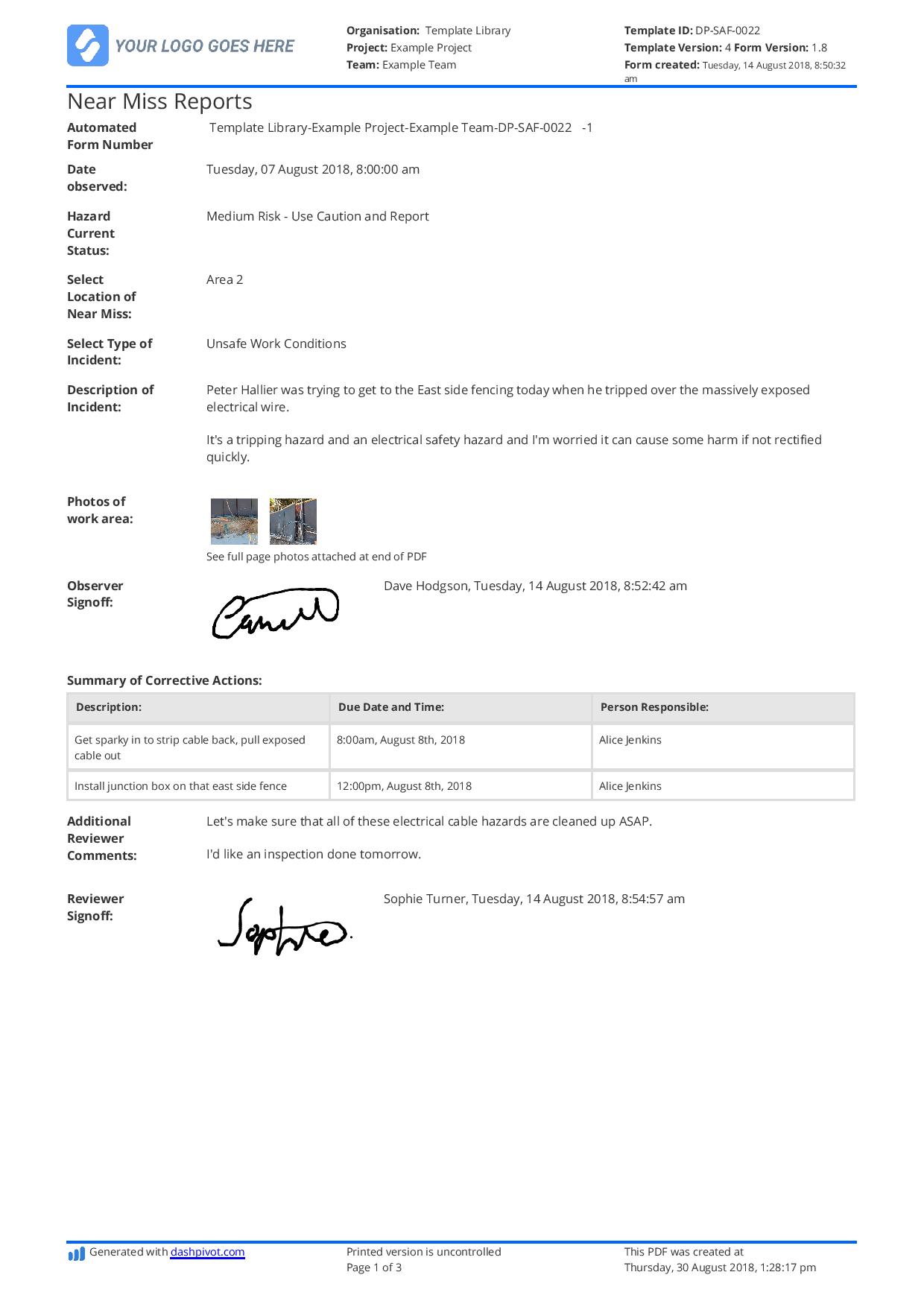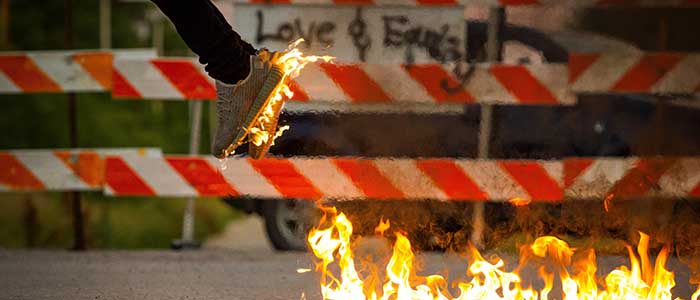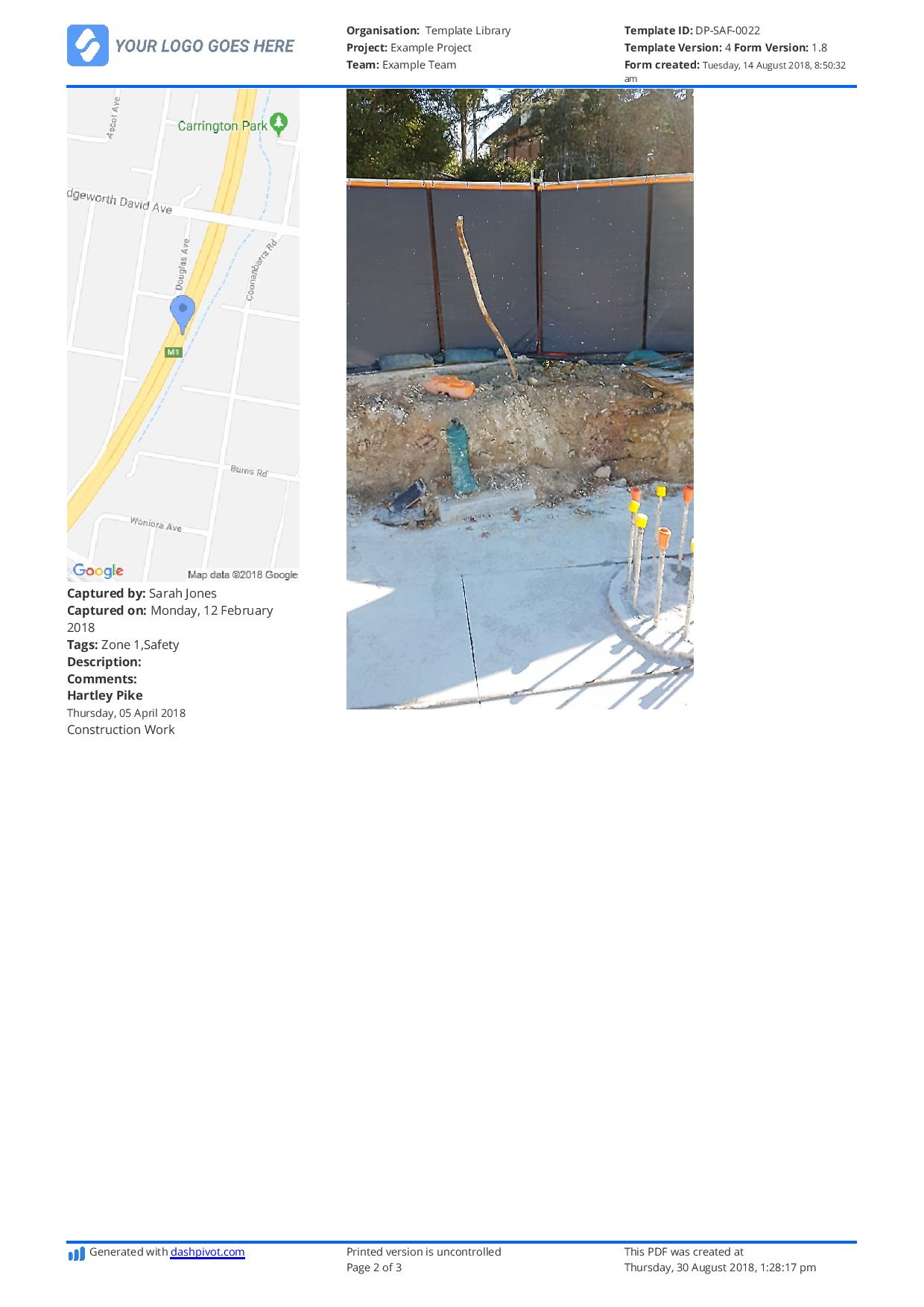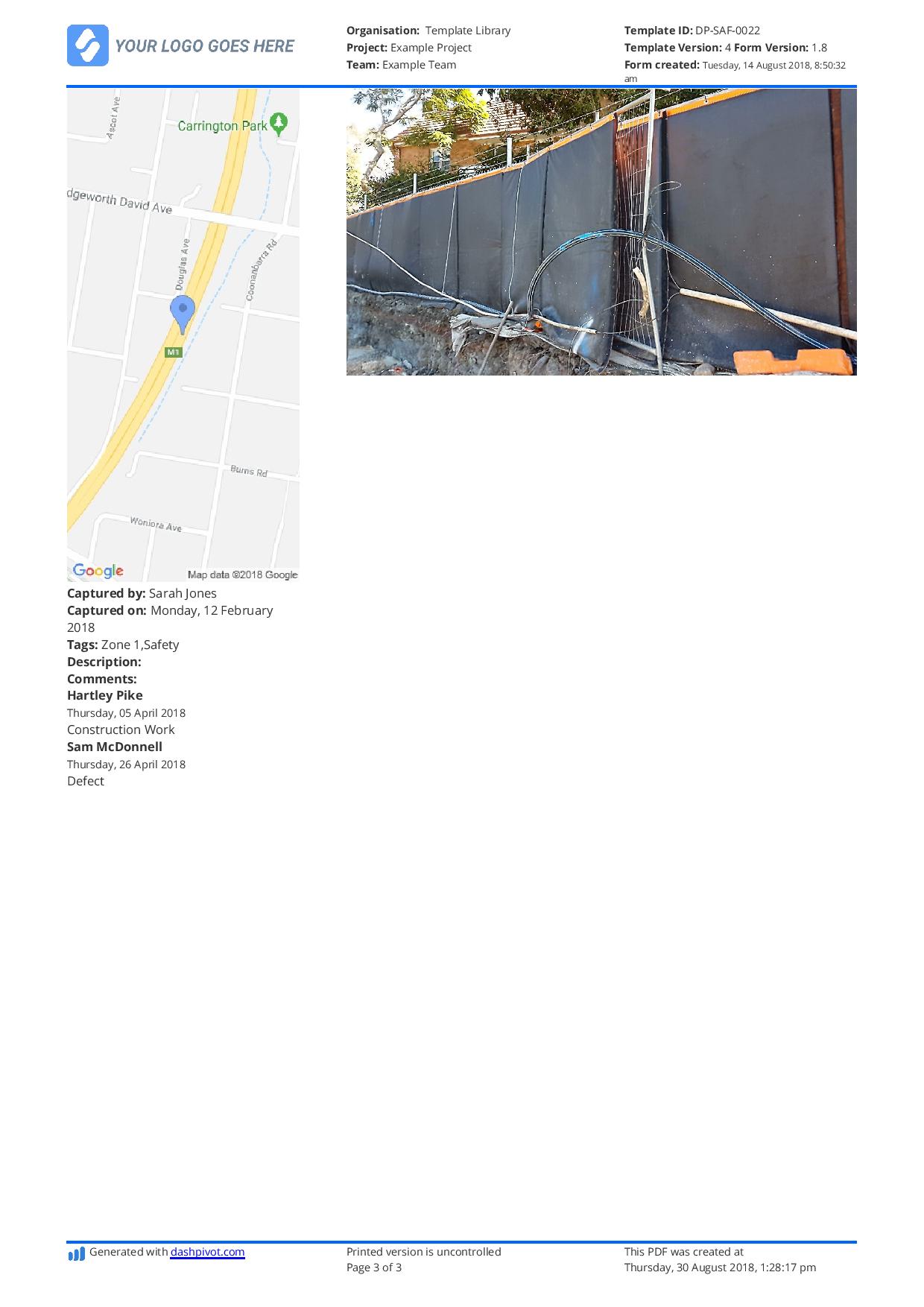Safety – Here’s the right near miss reporting format for you

The right near miss reporting format for you
What is a near miss report used for?
A near miss is defined as:
An unplanned event that did not result in injury, illness or damage – but had the potential to do so.
And a near miss report is simply a report filled out on site or in the office which captures the unplanned event that did not result in injury, illness or damage - but had the potential to do so.
Near misses reporting forms are one of the softer and more subjective forms in site information capture. There is a reasonable amount of debate around what warrants a near miss report.
But for the most part, near misses are reasonably self-explanatory, and an important component of general site safety and safety management. Having a well documented process and understanding about what warrants a near-miss, and having an easy to access and easy to complete near miss report ensures that your teams and workers fill out near miss reports whenever they are required.
The more the merrier (to an extent of course).
A near miss reporting format example
In the example below, Sophie Turner has documented an unsafe work conditions near miss.
The near miss involved a tripping and electrical safety hazard associated with exposed wiring.
While there was no incident, Sophie did the right thing in reporting the near miss so that it can be rectified - and keep everyone on site safer today and in the future.
The key to a good near-miss reporting format is to balance the need for information with the need to reduce form friction and the time it takes to report. The goal of the form should be to simply capture the near miss with enough information so that the responsible party can take an action to prevent injury - or prevent the hazard getting worse.

Use and customise this near miss report template for free now.
So what should be in your near miss report?
What's in your near miss report may change from time-to-time based on qualitative feedback and quantitative data tracking how many near-miss reports have been filled out (and relative to before we added or took away form fields).
In saying this, there are some core report fields which should be a part of your near miss reporting format - no matter who you are or what you do:
Date observed: The date at which the near-miss hazard was identified
Hazard current status: This status enables people to see how urgent the near-miss is/was
Location of near miss: The location at which the near miss took place (or where the hazard is located)
Description of incident: A little bit more detail around the incident so a reader can get some more context
Photos of work area: Not compulsory, but highly beneficial. Pictures tell a thousands words, and a picture of a near miss or hazard makes it very apparent what is wrong or could go wrong (site capture software can help with taking photos on site with tablet or phone)
Observer signoff: The person who saw the near miss puts their name and signature on the form so it can be traced back to that person
In addition to these documenting fields, we recommend including the rectification or corrective action portion of the form as well. Keeping the documentation portion of the report with the corrective actions taken helps improve safety reporting and helps near-misses and hazards get actioned - otherwise the form remains 'unfinished'.
Site safety management is time-consuming and hard to manage...
It's hard enough to get engineers, foremen and project managers to document near misses, and it's hard to track near misses and hazard rectification.
If you are looking for a complete safety management software system, take a look here.
Or you can get started with a digital template which streamlines near-miss reporting for people on site and in the office.

Near Miss Reporting template
Keep site safer by making your near miss reporting procedure safe and streamlined. See the template →

